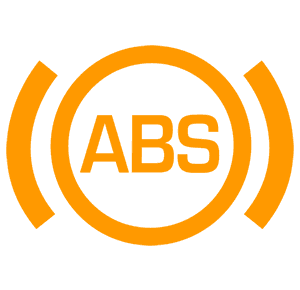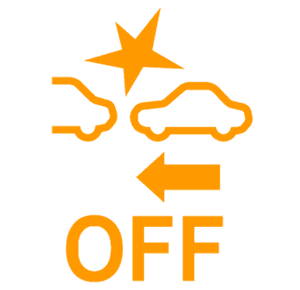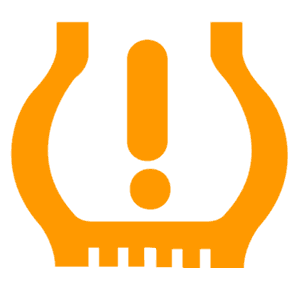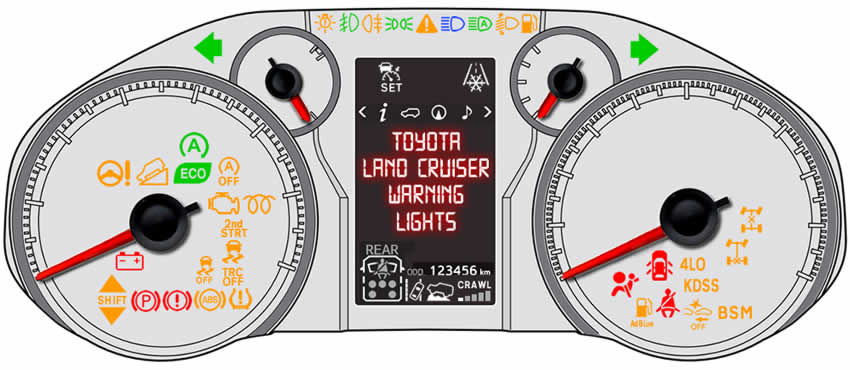Toyota Land Cruiser Dashboard Warning Lights
The Land Cruiser, also known as the Toyota Prado has been produced by Japanese car manufacturer Toyota for over 70 years. Here we take a look at the dashboard warning lights for the latest versions of the Land Cruiser.
Some of the warning lights may not apply to your Land Cruiser as it depends on which model variant you have. Dashboard designs also vary depending on model variant. These are the dashboard warning lights for the Toyota Land Cruiser. Each symbol meaning is explained, along with the appropriate action to take.

Master Warning Light
The triangle containing an exclamation point is the Toyota Land Cruiser master warning light. The master warning light may illuminate on its own with or with another warning light. It may also illuminate steady, or flash. If the master warning light flashes along with an audible alert, it indicates a problem that may cause risk to the vehicle occupants.
This warning light can also come on to alert the driver that a message is available to read in the multi-information display. To see the possible light combinations of steady, flashing along with audible alerts, see Toyota master warning light.

Brake Warning Light
One of the more serious symbols to illuminate is the red brake warning light. The illumination of the brake warning light may indicate (on older versions of the Toyota Land Cruiser) that the hand brake is applied.
If the hand brake is properly released, the brake light may illuminate to indicate the brake fluid level is low. Check brake fluid level as soon as possible and if necessary, top up with SAE J1703 or FMVSS No. 116 DOT 3, or SAE J1704 or FMVSS No. 116 DOT 4 brake fluid. If the brake fluid levels are adequate or the brake light remains lit after topping up, it may indicate a malfunction with the vehicle’s braking system.

Charging System Warning Light
The Toyota Land Cruiser charging system warning light (battery warning light) remains lit to indicate a fault in the electrical charging system. If the red battery light comes on while driving, it’s possible that the engine may shut down sometime soon. Make your way immediately to a safe place or a local auto repair shop.
Possible reasons for the fault include a malfunctioning alternator (generator), drive belts, battery connections / wiring or ageing battery. An ageing battery usually fails when outside temperatures lower. See why is my car battery warning light on for further information.

Oil Pressure Warning Light
The low oil pressure warning light is a serious issue due to lack of engine components lubrication. Along with the light, you may also see the the warning message: ‘Oil Pressure Low Stop in a Safe Place See Owner’s Manual’. Low engine oil pressure can ultimately result in engine seizure. The low oil light can also come on when engine oil levels are low.
If it comes on, check engine oil levels and top up using oil grade: 0W-20 and 5W-30. If oil levels are sufficient or the oil light remains lit after topping up, do not continue driving. Arrange for a tow truck. For further information, see red engine coolant warning light on or flashing.

High Coolant Temperature Warning Light
This warning light indicates the engine coolant is too high and that the engine is overheating. If the high coolant temperature warning light comes on while driving, immediately switch off the air conditioning (if applicable), find a safe place to stop and switch off the engine.
If there’s any steam coming from the engine compartment, wait for it to subside and open the hood. After the engine has cooled, check hoses and radiator core for any leaks. Check cooling fans and coolant levels in the reservoir. Add coolant if necessary, but if you haven’t coolant, water can be used in emergencies. After adding coolant, start the engine and turn on the air conditioning system to check fans are operating.

Low Engine Oil Level Warning Light
This warning light indicates that your Toyota Land Cruiser’s engine oil level is low and requires topping up. Check engine oil levels and add oil if necessary. The low engine oil warning light may come on if the vehicle is stopped on a slope. Move the vehicle to a level surface to see if the warning light goes off. Continuous driving with low engine oil levels may result in damage.

SRS / Airbag Warning Light
There are two parts to the Toyota Land Cruiser airbag warning light coming on; the SRS (supplemental restraint system) airbag system and the seat belt pretensioner system. There are several parts to the SRS airbag / seat belt pretensioner system. Diagnostic equipment is required to scan for airbag fault codes to diagnose which part is at fault. The main components include:
- Airbag Inflator – this unit inflates the airbag
- Impact Sensors – these detect whether the vehicle is stopped suddenly
- SRS Airbag Module – the airbag computer
- Clock Spring – this is inside the steering wheel column and connects to the driver’s airbag
- Airbag wiring harness – located under the front seats and can include airbag and seat belt pretensioner components

ABS Warning Light
ABS (Anti-lock Braking System) is a driver safety system that’s been standard on all new consumer vehicles since 2004 (EU) and 2014 US). ABS allows the driver to continue to control the vehicle’s steering under heavy braking due to the wheels being prevented from locking. The Toyota Land Cruiser ABS warning light coming on means there’s a fault with:
- The ABS/Multi Terrain ABS
- The brake assist system
Diagnostics is usually required to scan for fault codes to locate the specific fault with the ABS system. When the ABS light comes on, one of the most common fault is due to one of the vehicle’s four wheel speed sensors failing.

Power Steering Warning Light
The amber steering wheel and exclamation point means the Toyota Land Cruiser has a fault with the power steering system. If you have an older version of the Land Cruiser with a hydraulic power steering system, it could be a leak in the system causing a low fluid level.
With electric power steering, the problem may relate to battery issues or a problem with the sensors. Occasionally, power steering motor may overheat if the steering remains at full lock for extended period of time while the engine is running, or when turning the steering continuously for lock-to-lock. Switching off the ignition and restarting may clear the fault light.

VSC Warning Light
VCS (Vehicle Stability Control) is a driver safety system responsible for reducing understeer and oversteer. VSC can automatically brake individual wheels and/or reduce engine power to help stabilize the vehicle. It’s usually beneficial to keep VSC switched on, however, if your Toyota is stuck in mud or snow, TRC may reduce necessary power from the engine to the wheels required to free the vehicle. Press the VSC OFF button to switch off TRC to make it easier for you to rock the vehicle and free it.
If the VSC light blinks, it indicates the system is operating. If the VSC light remains lit, it means there’s a fault in the system. A constantly illuminated VSC light on the Toyota Land Cruiser may indicate a fault with the following systems if equipped:
- The VSC system
- The trailer sway control system
- The TRC system
- Active TRC system
- The downhill assist control system
- The hill-start assist control
- The Multi-terrain Select
- The Crawl Control
One of the most common reasons for the VSC warning light remaining lit is due to a malfunctioning wheel speed sensor. Diagnostics is required for fault code scanning. VSC is Toyota’s version of ESC (Electronic Stability Control). For more information, see What ESC is in Cars and How Does ESC Work in Cars.

A/T Oil Temp Warning Light
The A/T Oil Temp warning light stands for automatic transmission oil temperature and is warning that the Toyota Land Cruiser’s automatic transmission fluid temperature is too high. If the A/T Oil Temp light comes on while driving, immediately stop the vehicle in a safe place, place the gear shifter into Park (P) and allow the transmission to cool.
The vehicle will be ready to drive when the warning light goes off. If the A/T Oil Temp warning light is flashing, it means there’s a fault with the automatic transmission. If the warning light remains either lit or flashes, contact a Toyota repair workshop.

Engine Warning Light
The engine warning light, also called the check engine light or malfunction indicator lamp illuminates on the Toyota Land Cruiser dashboard to warn of a fault in one of the following:
- The electronic engine control system
- The electronic throttle control system
- The DPF system
- The emission control system
- The electronic automatic transmission control system
There’s a wide array of possible faults that can trigger the engine warning light and as such, diagnostic equipment is required. When the engine light illuminates, a fault code is typically generated and stored. Diagnostic equipment scans the system for fault codes, which when found, helps to locate the cause of the fault.
You can usually continue driving when the engine light is on, but prolonged use of the vehicle without having the fault rectified may worsen the problem, becoming more costly to fix. If the warning light is flashing, it may indicate an engine misfire. If the engine light is flashing, reduce speed and if possible, reduce vehicle load until the light stops flashing.
For more information about some of the more common reasons for the check engine warning light to come on, how to scan for Diagnostic Trouble Codes and what to do when the engine warning light comes on, see reasons why the engine warning light is on.

KDSS Warning Light
The KDSS warning light relates to the Toyota Land Cruiser Kinetic Dynamic Suspension System and indicates a malfunction. The KDSS system was first introduced in the 2004 model year Land Cruiser and consists of hydraulic pump, hydraulic actuators, various valves and sensors. IF the KDSS warning light comes on, diagnostics are required to scan for fault codes.

Fuel System Warning Light
The Toyota Land Cruiser fuel system warning light flashes along with an audible alert when when the accumulated water in the fuel filter has reached the specified level and requires draining. In this instance, the fuel filter must be drained immediately to prevent possible damage. If the warning light remains steady lit, it means there’s a fault in the fuel system.
For further information about the Toyota Land Cruiser’s fuel filter, see how to drain water from the Toyota Land Cruiser’s fuel filter.

Pre-collision System Warning Light
This warning light indicates a problem with the Toyota Land Cruiser pre-collision system. If the warning light illuminates along with an audible alert, it means there’s a malfunction with the pre-collision system. If the warning light illuminates without an audible alert, it it means the pre-collision system is temporarily unavailable and may require corrective action.
A situation that requires corrective action may involve cleaning the windshield to remove dirt from the camera’s view. The front facing camera may not operate if the vehicle has been parked in very hot or very cold conditions. When the temperature becomes normal, the system will begin to operate. Check to ensure the radar sensor is clean from dirt and debris. For further information, see Toyota Land Cruiser sensors location.

Parking Assist Sensor Warning Light
The Toyota Land Cruiser parking assist sensor warning light either comes on steady along with an audible alert to inform you that the parking assist system has a malfunction, or the warning light flashes, along with an audible alert to inform you that the parking assist sensor is dirty or covered with ice and requires cleaning. There are four parking assist sensors located in front and four in the rear bumper. Clean the front and rear bumpers. For further information, see Toyota Land Cruiser sensors location.

LED Headlight Warning Light
If your model of Toyota Land Cruiser has LED headlights, the light symbol containing an exclamation point illuminates when a problem has been detected. The LED headlights may still function depending on the nature of the fault. This requires an inspection by a Toyota workshop.

Tire Warning Light
The Toyota Land Cruiser tire warning light illuminate for two possible reasons; one or more tires have become underinflated, or there’s a problem with the tire pressure monitoring system (TPMS). Always adjust tire pressures based on the cold tire pressure label located inside the driver’s door.
Low Tire Pressures
Tire underinflation can be the result of natural causes such as a drop in ambient temperatures which will lower the air pressure inside the vehicle. The warning light may also illuminate if a tire receives a puncture. Under certain circumstances, the tire warning system may require resetting. For further information, see Toyota Land Cruiser tire pressure light reset.
Tire Pressure Monitoring System (TPMS)
The Toyota Land Cruiser has a tire pressure monitoring system (TPMS) that constantly monitors tire pressures by use of sensors located inside each tire (Direct TPMS). If there’s a problem with the system, the warning light will flash for around 1 minute, then remain on. Possible reasons why the Toyota Land Cruiser tire warning light may flash include:
- If non-genuine Toyota wheels are used.
- A tire has been replaced with a tire that is not an OE (Original Equipment) tire.
- A tire has been replaced with a tire that is not of the specified size.
- Tire chains etc. are equipped.
- An auxiliary-supported run-flat tire is equipped.
- If a window tint that affects the radio wave signals is installed.
- If there is a lot of snow or ice on the vehicle, particularly around the wheels or wheel housings.
- If the tire inflation pressure is extremely higher than the specified level.
- If the spare tire is in a location subject to poor radio wave signal reception.
- If a large metallic object which can interfere with signal reception is put near the spare tire.
- If tires not equipped with the tire pressure warning valves and transmitters are used.
- Sensors have been damaged during tire change.
- Sensor batteries have expired.
- If the ID code on the tire pressure warning valves and transmitters is not registered in the tire pressure warning computer

Headlight Leveling Warning Light
Automatic headlight leveling automatically adjusts the angle of the headlights so that the road is always properly illuminated. This warning light comes on when a fault has been detected with the automatic headlight leveling system. Common reasons for faults can include fuses, or automatic headlight leveling sensors or motor.

Auto Start Stop Off Warning Light
This warning light illuminates when the Toyota Land Cruiser engine automatic start stop system has been manually deactivated via auto start stop button located to the under-left side front of the driver’s compartment. The auto start stop off warning light will also come on if there’s a problem with the system. For more information about the stop and start system, see Toyota Land Cruiser stop and start system.

Lane Departure Warning Light
The lane departure alert system warns the driver on unintended lane changes by gently operating the steering and by providing an audible alert.
If the lane departure alert (LDA) system is not working properly, the amber warning light illuminates along with a possible message: ‘Lane Departure Alert Malfunction’ or ‘ Lane Departure Alert Unavailable’. The system is temporarily cancelled due to a malfunction in a sensor other than the front camera.
Turn the LDA system off, wait for a little while, and then turn the LDA system back on. The LDA system makes use of the forward mounted camera at the top-center of the windshield and the radar unit located in the front grille. Ensure these are kept clean and free of debris. For further information, see Toyota Land Cruiser sensors location.

Smart Entry Warning Light
The Toyota Land Cruiser smart entry system allows the driver to lock and unlock the side doors and the back door, opens the glass hatch and start the engine simply by carrying the electronic key on their person. The smart entry and start warning light may illuminate in yellow or green along with an audible alert to indicate a problem. For further information on the Toyota Land Cruiser smart entry system and the meaning of the the flashing key light and audible buzzers, see Toyota Land Cruiser smart entry system.

AdBlue Warning Light
AdBlue is used and consumed whilst driving to reduce the amount of nitrogen oxides in exhaust gas. When the supply of AdBlue is exhausted, the engine is unable to start. The amount of remaining AdBlue remaining the in tanks can be checked via the multi-information display.
During normal driving, 1 L (1.1 qt., 0.9 Imp.qt.) of AdBlue is consumed approximately every 700 km (435 miles). After a full refill of AdBlue, the vehicle can be driven for approximately 8000 km (4971 miles) before all AdBlue is depleted.

DPF Warning Light
DPF stands for ‘Diesel Particulate Filter’ and its job is to trap harmful soot and particles from being released through the exhaust and into the environment. As the filter becomes full (saturated), it requires cleaning (regenerated). The DPF deposition status appears when the ‘ODO/TRIP’ button is pressed.
If the Toyota Land Cruiser DPF warning light comes on or flashes, it means the filter requires cleaning. This process is often carried out without driver knowledge, but on occasions, especially if the vehicle is used primarily for short trips, the filter may require driver intervention. To clean the DPF, drive continuously for around 20 – 30 minutes at a speed of around 40 mph, or until the warning light goes off. Ensure the engine is sufficiently warmed up before doing so. Best results are often obtained on high speed roads with little stopping.

Brake Override Warning Light
The symbol with an arrow pointing to the brake pedal is the Toyota Land Cruiser brake override warning light. Brake override is a system that automatically overrides a vehicle’s throttle when both the brake and the accelerator are depressed at the same time. It’s essentially a safety system designed to prevent unintended acceleration.
When the brake override warning light illuminates and a warning buzzer does not sound, it indicates that the accelerator and brake pedals are being pressed simultaneously. In this instance, release the accelerator pedal and depress the brake pedal. When the brake override warning light illuminates and a warning buzzer does sound, it indicates a malfunction in the brake override system / drive-start control.

Go to Service Warning Light
The Toyota Land Cruiser wrench and exclamation point symbol is the ‘Go to Service’ warning light. This warning light indicates a malfunction in the electronic engine control system or electronic throttle control system. If this warning light illuminates, the vehicle will need to be taken for diagnostics.

Engine Oil Maintenance Warning Light
The Toyota Land Cruiser wrench / spanner symbol is the engine oil maintenance indicator and it may either flash or illuminate steady. If the engine oil maintenance warning light flashes, it indicates that the engine oil is scheduled to be changed and comes on approximately 25000 km (15000 miles) after the engine oil is changed.
If the engine oil maintenance warning light remains on steady, it means the engine oil and oil filter should be changed. In order for the engine oil maintenance scheduler to work properly, it must be reset immediately after changing the engine oil and oil filter. For further information on how to set up the oil maintenance program, see Toyota Land Cruiser oil maintenance reset procedure.

2nd STRT Warning Light
By activating 2nd STRT mode second start mode), it allows the Toyota Land Cruiser to start off in 2nd gear, ideal for accelerating on slippery road surfaces such as snow and ice. The 2nd STRT mode button can be located on the center column of the vehicle’s dashboard. Press the button again to cancel 2nd start mode.

4LO Warning Light
The Toyota Land Cruiser 4LO transmission provides maximum traction, while utilizing 4 wheel drive. 4LO works best in situations such as towing an unusually heavy load, driving off-road, in the snow, or on steep hills. Make sure you turn 4LO off once you return to normal driving conditions.
If the light blinks it means the 4wd is not working. First thing to do is to check the fuses, but it’s often something to do with the transfer case actuator. Diagnostics is often required to scan for fault codes.

Center Differential Lock Warning Light
The Toyota Land Cruiser center differential lock forces all wheels to rotate at the same speed, regardless of traction. Enabling center differential lock is most beneficial on terrain where one wheel may leave the ground as it means full power remains at all other wheels. The center diff lock divides power between the front end and the back axle for your vehicle. This means that your engine power is divided 50/50 between the two axles.
Center differential lock can also be used on the road, during icy, snowy conditions, but always deactivate the center differential lock when driving in dry conditions on a paved surface.
The center differential lock makes use of a electronic actuator on the back of the transmission/transfer case assembly. If center differential lock if used infrequently, the system may stick resulting in a flashing center differential lock warning light.

Rear Differential Lock Warning Light
Unlike center differential lock which divides power between the front and rear axles, rear differential lock forces both wheels on the rear axle to rotate at the same speeds. As with center differential lock, always disengage the rear differential lock when driving on dry paved roads as this will put undue stress on vehicle components, increase tire wear and make vehicle handling harder.

BSM Warning Light
The BSM (Blind Spot Monitoring) system helps to assist the driver on when to safely make lane changes by monitoring the area of the vehicle’s blind spots (areas that cannot be seen in the vehicle’s mirrors). BSM advises the driver of any vehicles existence in adjacent lanes via the outside rear view mirror indicator
BSM and Rear Crossing Traffic Alert (RCTA) both make use of radar sensors, one located on each corner or the rear bumper. Ensure these areas are kept clear and clean for optimal operation. For further information, see Toyota Land Cruiser sensors location.

Downhill Assist Warning Light
The Toyota Land Cruiser Downhill Assist Control (DAC) can be operated when in 4WD mode and when the vehicle is travelling either forwards or backwards. When DAC is activated, the system applied individual brake to keep the vehicle stable and to maintain a consistent speed of three to 4.5mph during descent. It does not require the driver to operate pedals.

Crawl Control Warning Light
The Toyota Land Cruiser crawl control allows the vehicle to travel at fixed low speeds on rough, off-roads terrain. The system helps to reduce loss of traction on slippery surfaces and improves overall vehicle stability. During operation, the driver does not need to operate pedals. Speeds can be selected via the control switch.

Multi-terrain Select Warning Light
The Toyota Land Cruiser Multi-terrain Select system assists drivability in off-road situations. Modes can be manually selected via the Multi-terrain Select mode select switch based on the type of terrain you are driving on. 5 possible terrain modes are available to choose between. An auto mode is also available via the MTS AUTO switch.

Snowflake Warning Light
The Toyota Land Cruiser snowflake warning light comes on as a warning when outside temperatures fall below 3°C (37°F). The warning is to alert the driver that there may be a presence of ice on the road and they they may be slippery. For further information on the frost warning light, see snowflake dashboard warning light explained.
Driving Modes
The Toyota Land Cruiser has a selection of driving modes that can be selected. These include:
Normal Mode
Normal mode offers a good combination performance, comfort and economy. Ideal for normal driving.
ECO Drive Mode
ECO drive mode is used to help achieve low fuel consumption during trips that involve frequent stop / start and accelerating.
Comfort Mode
Comfort mode adjusts the suspension to allow for greater comfort. This mode is ideal for city driving.
Sports Mode
Sports mode adjusts the vehicle’s acceleration response via the transmission, engine and steering response.

Very god toyota